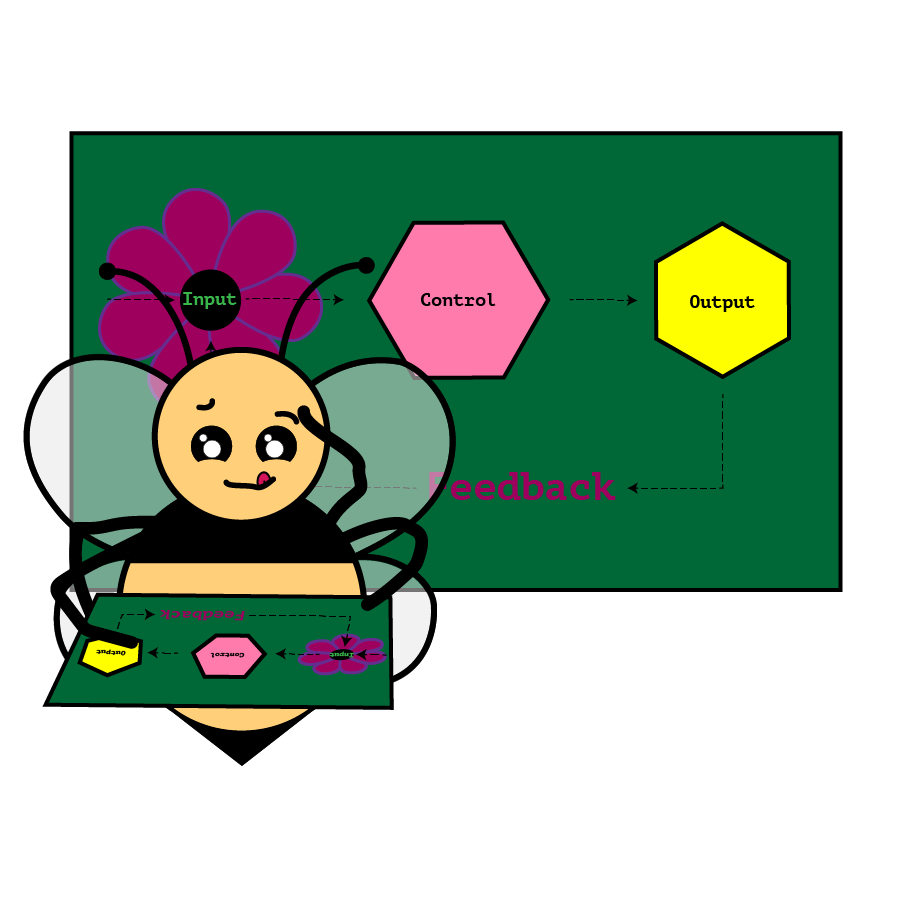
Saying “control system” makes this sound fancier than it is. We mean it in the simplest sense, like how your thermostat is a control system. The temperature dropping makes your heater turn on, which makes the temperature rise, which makes your heater turn off.
Slightly fancier is if the heater dials itself up gradually as the temperature falls and dials itself down gradually as the temperature rises. That’s what you can do for beeminding a backlog. Like clutter in your house, emails in your inbox, bugs in your bugtracker, tabs in your browser, etc etc.
- Make a dirt simple Do More goal where you add +1 every time you remove something from the pile.
- (The universe keeps adding things to the pile throughout.)
- As part of your weekly review, if the pile is dwindling to nothing (haha) then dial the Beeminder goal to be easier.
- If you’re losing the red queen race — the pile is growing despite your beeminding — dial it steeper.
You can probably just go do that and stop reading now.
But here’s a refinement for the unlikely case that you actually reach the bottom of your pile and nothing new arrives. First, dial the rate to +1 every 2 weeks. So 0.5 per week or 1/14 per day. Then, when your goal comes up for review each week, you’ll notice that it has a beemergency coming up the week after next. (It will necessarily be at least a week in the future if you’re reviewing the goal weekly.) You can’t dispatch that beemergency because there’s nothing in the backlog, so you add a two-week flat spot to the goal.
Then just keep repeating that every week. As long as nothing new arrives in the backlog, you’ll keep flattening the goal’s bright red line for another two weeks. If new things show up rarely enough you could even make months-long flat spots instead of two weeks, to minimize the fussery. But the idea is that you could never forget about it indefinitely. You’ve flakeproofed it.
It’s kind of embarrassing how much over-engineering I did trying to solve the problem of backlogs before settling on this. The control systems approach with manual Do More goals has been working for me for a lot of different kinds of goals.
Examples
Zombies
A zombie is our term for a regression. A thing that used to work but broke. Aka backward progress. These are bad. Shamefully, we had let dozens of them accumulate over the years until we got serious about beeminding our way through them, using a whittle-down goal. Right around new years we managed to hit Zombie Zero. Then we backslid slightly and are now beeminding it control-systems-style. We seem to generate one per week on average, so that’s what our bright red line is dialed to, to keep us to at most a handful of zombies outstanding (outshambling).
Paper
Through some kind of catastrophic adulting failure in the early years of Beeminder, Bee and I ended up with a refrigerator-sized box of unsorted notes, documents, artwork from our kids, and mail. We spent literally years beeminding that down to a nice little stack. Which we now keep as a nice little stack by beeminding it control-systems-style.
Clutter
Cleaning and decluttering can be overwhelming because there’s so much junk that’s so hard to decide what to do with (hashtag first world problems). At some point Bee and I and our kids went around dumping all the clutter around the house into a box and then all made clutterbox goals: plain manual Do More goals to remove a couple items a day and decide where they belong (often the garbage).
Once again, if the box is getting fuller, we dial our roads up; if the box is nearing empty, we dial them down.
This one fizzled a bit as the box ended up mostly empty and people flattened their Beeminder goals but the house remained a mess. Our new plan is that you get a +1 for putting things in the box as well, but we don’t know how that’s going to play out yet.
Pocket queues
To repeat myself from the announcement of our Pocket integration, make your bright red line a bit steeper if you’re saving articles faster than you’re reading them and make it a bit shallower if you actually find yourself close to emptying your Pocket queue altogether. Easy-peasy.
(And it’s about a million times better than what I used to do with Pocket, trying to beemind the sum of the ages, in days, of all the articles in my queue. I thought I needed a clever metric that incentivized focusing on things that were more stale. I did not need that. My current Pocket goal is much more transparent and less magical. There’s no confusion or ambiguity about what I have to do to dispatch a beemergency, it’s perfectly predictable when beemergencies happen, and it’s easy enough to adjust the rate as I go to achieve the underlying goal. Namely, having my backlog of articles gradually shrink or at least not gradually grow without bound — redqueening it, in other words.)
Browser tabs, Trello cards, you name it
This technique applies to a lot of things! Email is another obvious one, but that’s tricky in practice because messages flow both in and out at a dizzying rate. I believe the control systems approach would work great but would require automatically telling Beeminder how many messages you’re archiving or deleting. In the meantime, I’ve stuck with a GmailZero goal plus a couple extra backlog goals… ok, this one is still a mess for me.
In conclusion, beemind a backlog (or any pile of things) with a Do More goal to dispatch items from the pile, treating the slope of that goal as your accelerator in your red queen race.